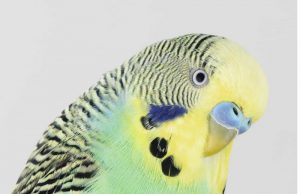
For the human, the ritual of getting to know each other is quite a process that often results in stress. We find someone who catches our eye, and then we must create a rapport to advance the relationship. It’s a time-honored protocol that no one can avoid. Relationships do not just happen; they are worked on laboriously and intently. This is how we go from generation to generation. This is how the human race continues on.
Charles Darwin had much to say about the advancement and evolution of our species. And not just the human species, but the creatures that fly and roam our earth. They too must catch the eye of a suitor to further the species. And they involve themselves in complex processes, maybe far more complex than the human species. Let’s look at a recent study that tests the concept that female budgerigars aren’t just looking for the pretty bird; they’re looking for the smart bird.
Budgies Find Problem-Solving Skills Attractive
A collaborative study between the Key Laboratory of Animal Ecology and Conservation Biology, Institute of Zoology at the Chinese Academy of Sciences (Beijing), and the Institute of Biology at Leiden University (Netherlands) has put their collective minds together to watch female budgies pick their mate. Previous work has alluded to the possible reality that the female budgie chose her mate based on the ability of the male to solve puzzles. This new study went further to test that thought.
The background of the study is quite involved. It looks at the Australian environment of the parakeet and the need for survival. To help in this, the female parakeet appears to depend on a smart male to help ensure that sustenance and safety is near. This study initiated relational prospects by bringing one female parakeet into contact with two possible male choices. The choice of a partner designated the winning male as the “preferred” male, while the other became “less preferred.” This was determined by who the female budgie spent most of her time with. The rejected male was then removed and placed into difficult training procedures where he was coached to discover how to open troublesome containers that provided food.
The birds that were successful in their training were then reintroduced to the two “chosen” mates. The troublesome containers were placed, and it was the once rejected parakeet that was able to easily open the container, while the “preferred” male could not. To add value to the exercise, the female was given the same container, but clear so that she could be seen that seeds were within.
They experienced the same difficulty as the “preferred” male had in attempting to get the seeds within. This was designed to let the female know what the prize was within and how difficult the procedure for extraction was. After watching the “preferred” male fail the attempts to open the container, and the “less preferred” male succeed at it, it did not take long before the female parakeet was sidling up to the once rejected bird. This happened in so many instances of the study leading to the conclusion that the female was interested not so much in looks and song, but the ability to provide.
To help cement the validity of the experiment, the study group often put the “less preferred” birds back into the cages without the container to show off with. With no incentive to shift allegiance, the female remained with the first chosen male. In short, the study concluded that female parakeets are not far removed from the female human in that the female bird, much as the female human, is attracted to brain power and the ability to provide.
This study in continuance is far from over. There are many questions yet to be answered. As with all studies, we find that birds are much smarter and far more complex than we may have thought them to be. We learn from them, and they can learn from us.
